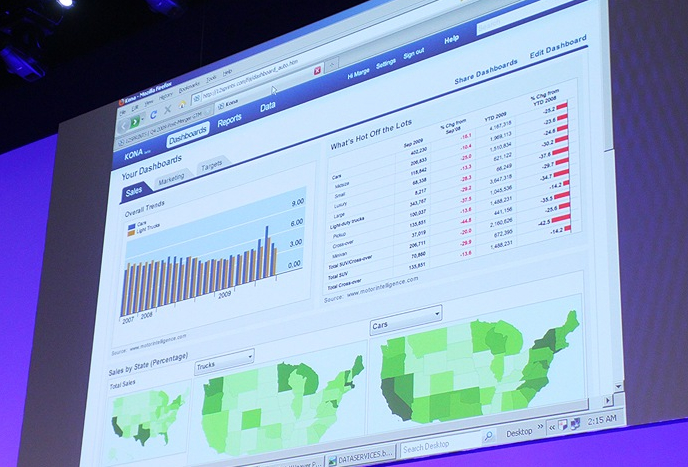Is BI ready to meet the real world?


Courtesy of Timo Elliott: http://timoelliott.com/blog/2009/10/sap-teched-vienna-09-opening-keynote-change-integration-and-innovation.html
One of my personal highlights at SAPTechEd this week was time spent with Marge Breya, EVP and general manager intelligence platform group, Netweaver. During her keynote, Marge talked about the next generation of business intelligence and gave a demonstration of Polestar. During the demo, Marge showed how it can mash up communications with finely sliced information that allows execs to make more informed decisions. It was impressive and made more so by the fact Marge runs her own demos with live data rather than the disguised PowerPoint stuff others prefer.
Afterwards, a group of us met to hear more about what Marge's group are thinking about. Marge kicked off by saying that when the company's preliminary Q3 results came in, she was able to quickly discover how a certain region had achieved sales that ran significantly counter to the remainder of the company. All good so far. But then Marge started to talk about how an understanding of what this group had done might be turned into a best practice. I struggle with this idea.
Marge makes no secret of the fact she's a 'data person' i.e. that she likes to base any decisions on facts she can see and upon which she can rely. She argues that because SAP is able to quickly expose a far richer set of data than was possible using traditional data cubes, this allows decisions to be pushed further down the decision tree. That seems intuitively correct but it disguises many aspects of buying decisions in particular that are not readily captured and which cannot be generalized across all types of sale. Marge acknowledged that for example it is useful to know why one sales person prefers to hunt for volume deals while another prefers to go after big fish.
What fascinates me are buying decision making processes. Marge thought that by contextually understanding areas of success it might be possible to develop new best practices that would allow a company to replicate success in different parts of the business. "If you get to 70% of that success then you're making a very big contribution to value." Agreed. Except for one small but important problem.
Technology buyers often behave in irrational ways. In London for example I met with SAP buyers who were primarily influenced by SAP's brand rather than functional completeness for what they need. At a personal level I've been a Nokia phone buyer for more years than I can remember. That only changed when the brand promise evaporated for me as I wrestled with the N96. Marge found that an odd argument yet I can think of numerous examples where irrational behaviors guide business decisions. From my side I believe it is important to understand the operational motivation behind irrational factors that drive decisions and then see if there are ways to tap into those factors. That's far more complicated and error prone than simply crunching numbers and acquiring the tacit knowledge people are prepared to share in a wiki or blog.
The flip side is that where irrational behaviors have less influence, then outcomes can be better. As an example, I met with Consol, a South African glass packaging maker that has been using Business Objects SAP tools to work out where its IT support time and cost deltas lay. That analysis has allowed the company to release 18% savings back to IT innovation. On that basis, the use of SAP (or any other) technology becomes a no brainer and Consol is now looking at ways to drive adoption deep into its business.
The question then comes how SAP and its competitors will find ways that help business reduce decision making risk and uncertainty. The social computing crowd will jump up and say 'Look at what we can offer in terms of social business design.' Fair comment except we are at the very early stages of understanding the capture and dissemination methods for tacit information let alone able to deploy the interpretive and pattern matching skills needed. To that point I wasn't convinced Marge has a clear answer. The good news is that the company is actively looking at this problem. I will be interested to hear their conclusions.